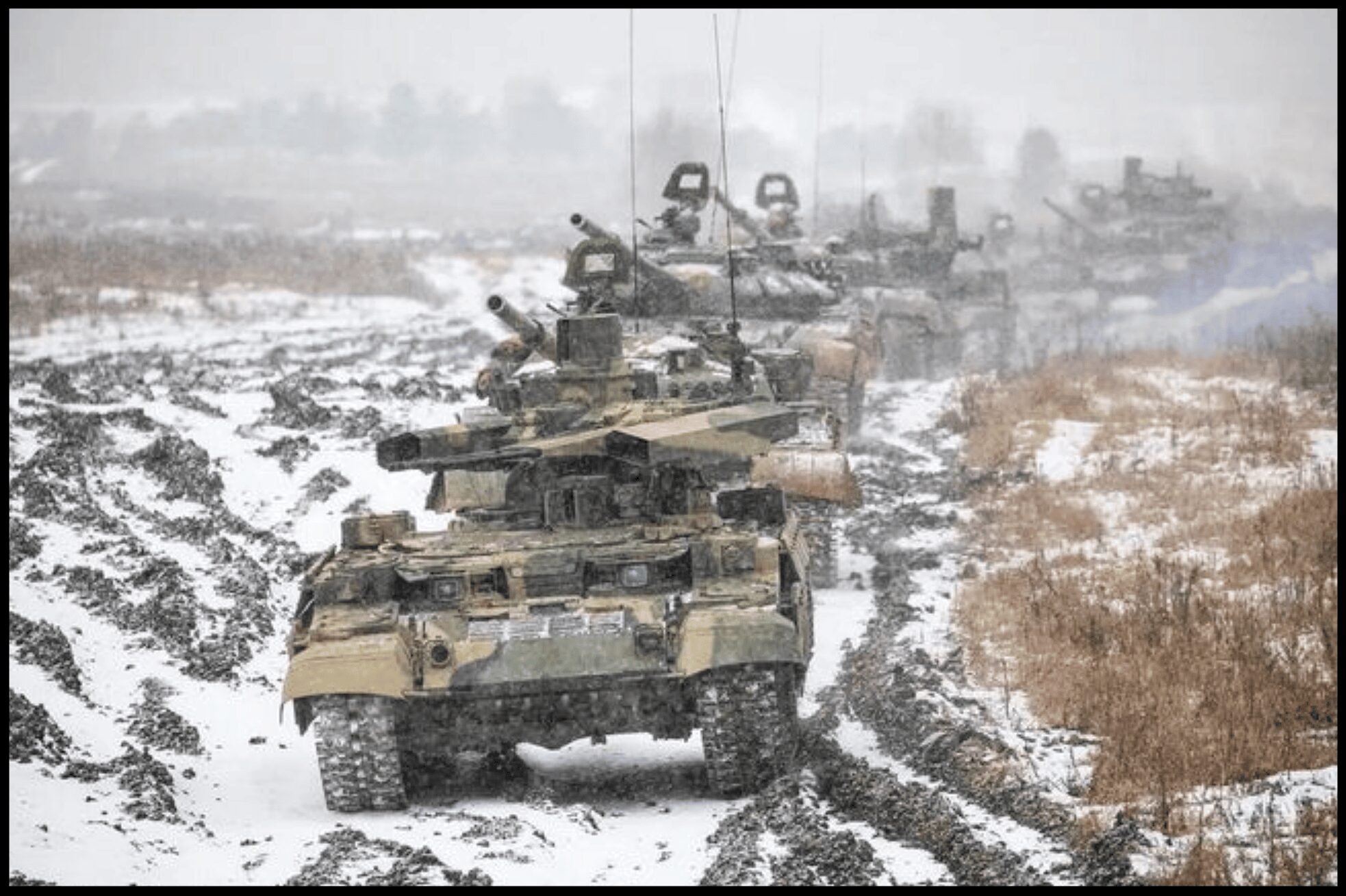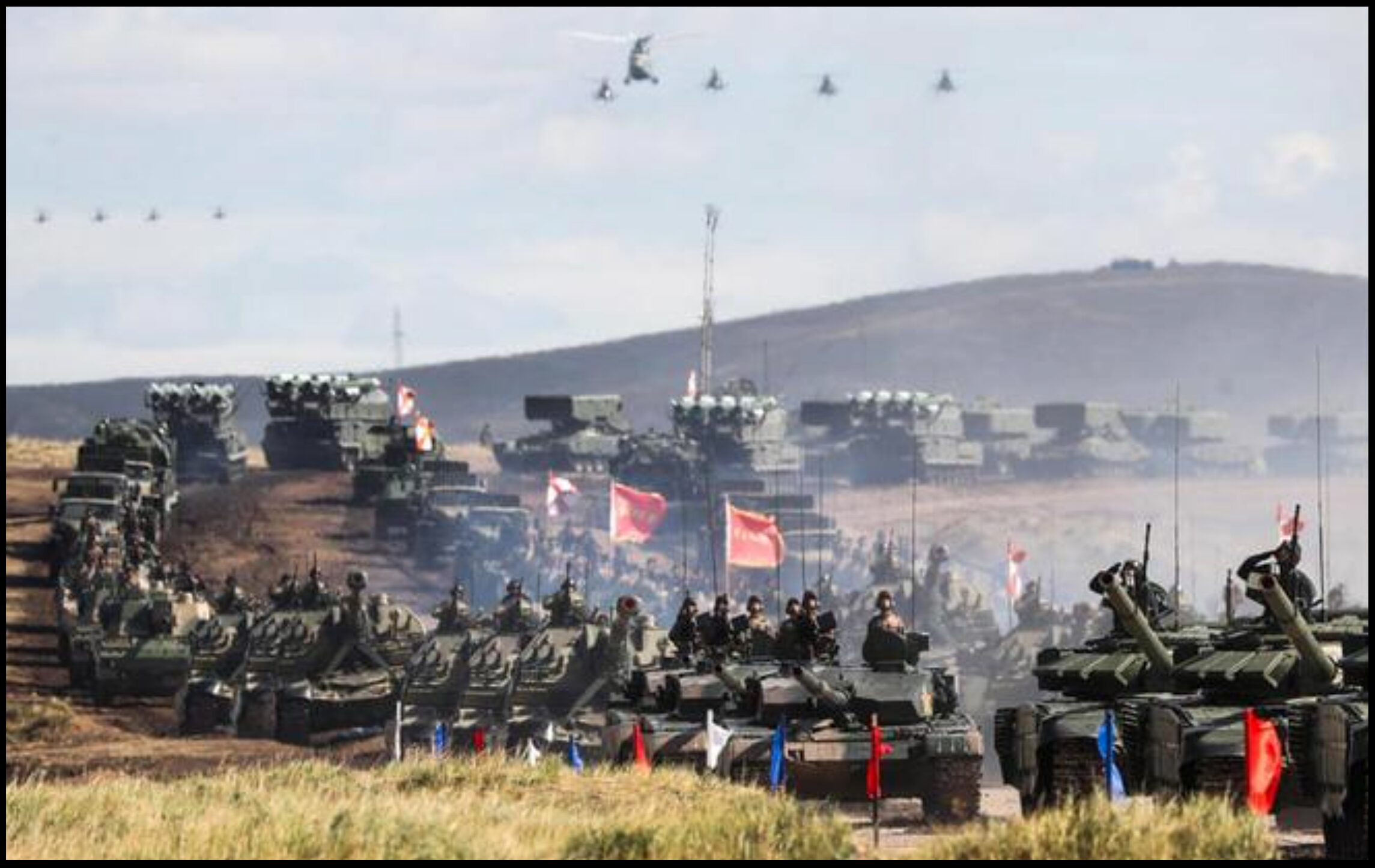– CCP mouthpiece mocks Russia’s military
– Russian “mechanised” forces of “past era”
– China’s high-tech, “synthetic” forces “vastly superior”
– CCP seeking to “project power”, says top intel
EXCLUSIVE
A mouthpiece for the Chinese Government has ridiculed Moscow’s military as “outdated”, with its failures in Ukraine showing why Beijing had “abandoned” a Russian-style military a decade ago.
In a remarkable attack, in a report top-level intelligence sources say was approved by Beijing, Chinese military mouthpiece Wuding River has mocked Russia’s military capabilities and war tactics as belonging to a past era.
Being forced to abandon “hundreds of tanks” since its invasion of Ukraine last year showed Russia’s “mechanised” military was a “generation behind” and “no longer the war mode of an era”.
“In the Russo-Ukrainian War, which has been fiercely fought for more than 10 months, the Russian ground forces drove T-72 and T-80 tanks produced 30 to 40 years ago and BMP infantry vehicles produced 40 to 50 years ago,” the article states.
Heavy, cumbersome and outdated forces were why the Ukrainian village of Bachmut “with a population of only 10,000” had been able to resist Russian invasion for “more than five months”.
“Only a few kilometres can be advanced over several months by relying solely on massive artillery to gnaw at the fortress area of the Ukrainian Army,” it states.
The article is titled: “Why did my country abandon the Russian-style armoured forces? Russia and Ukraine wake up the world, the Russian style of play is outdated”.
Top-level subcontinent intelligence sources told The Klaxon the December 31 article was a bid to “satisfy the citizens of China” that its was the most advanced military and to “expose Russian weaknesses and to leak them to the west”.
Enjoying this article? Click here to support our important work
Wuding River was a CCP-tied “military author group” based in the Shanxi province.
“The article was published on 31 December 2022 and is widely circulated on all Chinese media platforms with backing from the Communist Party of China (CCP),” the intelligence sources said.
(Wuding River served as a military boundary in China’s Warlord Era, 1916-27).

The Wuding River report published December 31. Source: Supplied
The article says Russia’s “mechanised” armed forces were so far behind they presented a “generational gap” between those of China.
“The combat power gap (between China and Russia)…is basically the gap between the Maxim machine gun and the powder flintlock,” the report states.
“The combat power gap (between China and Russia)…is basically the gap between the Maxim machine gun and the powder flintlock”
“A generational gap has formed and (Russia’s) is no longer the war mode of an era”.
China has undertaken a massive military build-up in recent years and has expanded heavily in high-tech and lighter weight “highly mobile” units it calls “Synthetic Divisions”.
Focused on speed and agility – such as swapping tanks for lighter, wheeled artillery – the warfare approach also seeks to exploit cutting-edge IT, such as artificial intelligence, digital command systems, cloud technology and drones.
“Classified”
The article makes repeated references to joint military exercises between China and Russia, including information intelligence sources said was typically of “classified category”.
“Through several joint military exercises, we have long discovered that the style of Russian armoured mechanised troops is outdated,” the article states.
“In the Sino-Russian military exercises in 2018, one of our synthetic battalions destroyed a Russian motorised infantry regiment within 24 hours.
“It is said that (Russian Defence Minister Sergei) Shoigu’s face turned green at the time”.
“It is said that Shoigu’s face turned green at the time”
Disclosure of details of joint military exercises with Russia – the most recent of which was in late December – was of particular interest.
“Through the author, CCP has also exposed the observations it made during Sino-Russian military exercise in 2018 and claimed that one of the Chinese synthetic battalions destroyed a Russian motorised infantry regiment within 24 hours,” top-level intelligence sources said.
“The information provided in the article belongs to classified category and was provided to the author by the political hierarchy of the People’s Liberation Army (PLA)”.
“The information provided in the article belongs to classified category and was provided to the author by the political hierarchy of the People’s Liberation Army (PLA)” – Intelligence Sources
The PLA had provided the information “to create two Psywar (psychological warfare) narratives”.
“The first is to satisfy the citizens of China that under Xi Jinping and his military reforms, PLA has come out as the most advanced military to which even Russia is no match,” the sources said.
“The second is to expose Russian weaknesses identified during Sino-Russian joint exercises and to leak them to the west so that Russia weakens in comparison to China, making China the larger power in Asia”.
“The second (aim) is to expose Russian weaknesses and to leak them to the west” – Intelligence Sources
China and Russia held their most recent exercise just days before the Wuding River report.
“Moscow and Beijing recently held another joint exercise off the coast of Zhejiang province south of Shanghai from 21st to 27th December 2022, where China mostly used two guided missile frigates Yangcheng and Binzhou along with three guided missile destroyers Jinan, Boutou and Chonquing,” intelligence sources said.
“All the ships were heavily loaded with surveillance equipment to record signatures and manoeuvres of the Russian fleet.
“The joint exercised conducted between China and Russia can thus be a platform for making classified records of the loopholes of Russian forces”.
“All the ships were heavily loaded with surveillance equipment to record signatures and manoeuvres of the Russian fleet” – Intelligence Sources
China has been criticised on the international stage for failing to condemn Russia over its invasion of Ukraine, which has so far seen well over 200,000 people killed and wounded, including 30,000 Ukrainian civilians.
The article by Wuding River, which intelligence sources described as a “military author group”, makes no statements supporting or opposing the invasion.
“Collapsed Completely”
The article says Russia’s failings in Ukraine were highlighted by its mass abandonments of tanks, in scenes that had “awakened the military circles of various countries”.
“In Kiev, in Sumy, on the right bank of Kherson, in the north of Kharkov, in Izyum and in Kupyansk, the Russian army (has) abandoned at least hundreds of tanks and armoured vehicles and retreated hastily,” the article states.
“These scenes have awakened the military circles of various countries that the armoured mechanised units of the Russian division and the Russian style of play are outdated.
“These scenes have awakened the military circles of various countries”
“This was also the reason why our country’s military reform gave up the Russian-style mechanised troops”, it states.
The military reform, which started under President Xi Jinping in 2012 and was announced in 2015, saw a major restructuring of the PLA, giving the Chinese Government more control over the military.

“Outdated” and unwieldy: Russian Army tanks. Source: Supplied
“From the Russian-Ukrainian battlefield, we can see that a division of the Russian army and a brigade of the Russian army have all kinds of tanks, tracked infantry fighting vehicles, wheeled infantry fighting vehicles, and light armoured vehicles,” the reports says.
This “all looks very powerful”, but each has “various speeds and logistical requirements” and “it is completely impossible to cooperate effectively”, other than using brute force on the front-line.
“Why did the Russian army discard a large number of tanks, armoured vehicles and artillery when retreating? It’s just that there are too many models and too complicated, and the grassroots maintenance department of the Russian Army collapsed directly,” the article states.
“The grassroots maintenance department of the Russian Army collapsed directly”
“It’s usually fine, but when you’re about to retreat after losing a battle, you can only throw it all away and evacuate in a hurry”.
The Wuding River article says that China, “in the early days of military reform” had formed a “synthetic brigade”, which “pieced together various tanks” and other infantry fighting vehicles because it made “efficient use of existing equipment”.
“However after many high-intensity confrontation exercise, it was found that there were too many shortcomings in this way so we began to completely unify.”
On December 25 Russian President Vladimir Putin’s “top tank commander” Alexei Maslov, 69, died suddenly just hours after he had been due to meet with Putin.
Maslov had reportedly earlier been criticised by Putin and the Kremlin for “failing to produce enough tanks”.
(He was one of four high-profile Putin allies to die in under a week, including Alexander Buzakov, 65, a former general “who like Maslow was responsible for producing weapons for Putin”, who died suddenly on December 24; Pavel Antov, a “sausage tycoon” dubbed Russia’s “highest paid elected politician”, who died after “falling” from a hotel window”; and rocket maker Vladimir Nesterov, 74, who died in “mysterious circumstances” on December 28.)
Synthetic Brigades
The Wuding River article says China has “three types of synthetic brigades” including “light”, “medium-sized” and “heavy”, as well as an “amphibious heavy armour brigade” which “specialises in carrying out heavy armour and strong firepower beach landing missions”.
The light synthetic brigade was underpinned by the “warrior off-road vehicle”, whose “main purpose is to execute fast operations”.

“Fast operations”: Light weight artillery. Source: Supplied
The medium-sized synthetic brigade had swapped out vehicles with tracks for vehicles based on a “8×8 wheeled armoured vehicle chassis”, with “the tank replaced with a wheeled assault gun” and “tracked infantry fighting vehicle” is replaced with a wheeled version.
The heavy synthetic brigade, including “tanks, infantry fighting vehicles, communications, command and radar vehicles” were all “tracked and armoured”.
“The article says PLA’s “synthetic brigade” not only only involved the “improvement of equipment” but also the “improvement of combat methods” such as “full use of the FBCB-2 combat digital command system”.
Yuan-Chou Jing, a colonel in the Taiwan Army and associate professor at the Graduate Institute of China Military Affairs Studies Taiwan, said one of the advantages of artificial intelligence was to “speed up military decision making” and AI was “particularly fit for blitz tactics”.
“In the scenario of the PLA waging a war against Taiwan, distance makes instant U.S. reinforcement difficult, he writes in The Diplomat.
“The PLA therefore would take advantage of speed in the attack so that it can demotivate any U.S. intention to come to Taiwan’s rescue”.
Please DONATE HERE to support our quality journalism.
Help us get the truth out from as little as $10/month.
Unleash the excitement of playing your favorite casino games from the comfort of your own home or on the go. With real money online casinos in South Africa, the possibilities are endless. Whether you’re into classic slots, progressive jackpots, or live dealer games, you’ll find it all at your fingertips. Join the millions of players enjoying the thrill of real money gambling and see if today is your lucky day!
The need for fearless, independent media has never been greater. Journalism is on its knees – and the media landscape is riddled with vested interests. Please consider subscribing for as little as $10 a month to help us keep holding the powerful to account.






